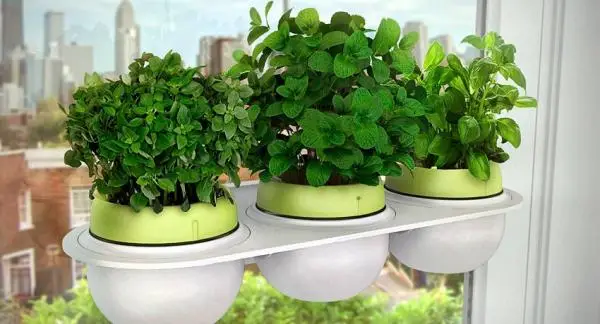Indoor plants can have a culinary and therapeutic use, as well as aromatize, oxygenate, purify our home and give it a much greener and more natural appearance. And achieving it is easier than it may seem. It will be enough to focus on a type of plant that is very accessible and easy to care for.
Indeed, if we want to take full advantage of the plants that we have inside the house, we will have to look towards that wonderful place where aromatic herbs are found. Among others, parsley, thyme, rosemary, basil, sage, tarragon, coriander, dill, spearmint, chives, mint …
In this post, we are going to do it, and also from a practical approach. Let’s see what basic things we need to know in order to successfully grow our aromatic herbs. From where to locate them or what type of pots, soil, or compost they need to, for example, the best time to water and which ones to choose, among other tips and practical tips.
What plants to choose?
Let’s start with the choice. It will be important to choose plants that we like, both aesthetically and emotionally and also to make our dishes . And it is that when choosing one or the other, personal preferences are important, no doubt, but it is also key to take into account if they are lively plants, with only seasonal duration.

Soil and compost
Since they are plants that are generally going to be in small pots, it is essential that they have a good quality soil. If we also choose organic soil or substrate , all the better.
In many cases, acquiring quality soil also means providing them with nutrients that act as compost. In other words, it will help us to pay less or even prevent us from doing so.
Also, of course, we can create our own enriched soil by adding compost, sand and other ingredients that can be useful to achieve quality soil. Deciding what to add will depend on both the type of plant we are going to grow and the base soil we have.
Observing the plants, specifically the problems or defects in the leaves can give us clues to identify deficiencies. An excessive or poor coloring can be due to a lack of phosphorus, calcium, magnesium or potassium , let’s say, with which we can correct the deficiencies.

Flowerpots: type and sizes
Again, we can say that of “for tastes, colors.” Or, in this case, for pots, according to taste. Still, let’s keep in mind that terracotta pots evaporate water, as they are porous. Therefore, if we cannot water regularly, it is better to opt for other materials.
Or on the contrary, they will be perfect if we water often and perhaps more than necessary. In turn, it is a convenient material as it allows the roots to breathe, a requirement that other materials do not meet.
On the other hand, to adapt containers made of glass , plastic or other materials, let’s do a creative recycling as much original as we want, but without forgetting that plants need drainage.
Its size will depend on our use and possibilities of integration in the decoration of the specific room where they will be. If we are going to use it intensively, we want the plant to favor the leaves over the roots, which means that very large pots are not suitable for us. A middle ground could be the equilibrium point that we seek.

How much light do they need?
The location of the plants is another key point for everything to go smoothly. If we have a very bright and sunny window , in addition to an airy space, we have an interesting place, just the one we need.
Plants that require less direct light or fewer hours of sun , for example, can receive it filtered by a curtain or the like. If we want to refine even more, let’s avoid the east or north orientations and, in general, the lack of light. Without forgetting, finally, that artificial light is another option.

… and when to water?
Irrigation is another fundamental aspect . First of all, let us bear in mind that with exceptions, aromatic herbs tend to prefer a high relative humidity, so if we do not have it we can help them by placing them on a humidification tray .
Preferably water in the morning, every week or ten days, depending on the dryness of the surface soil. Unless, as always, the specific plant claims otherwise.
If everything goes according to plan, with hardly any effort we can enjoy their beautiful appearance throughout the year and taste them freshly cut whenever we want. A pleasure for the spirit, a joy for the eyes and a special touch for meals.

